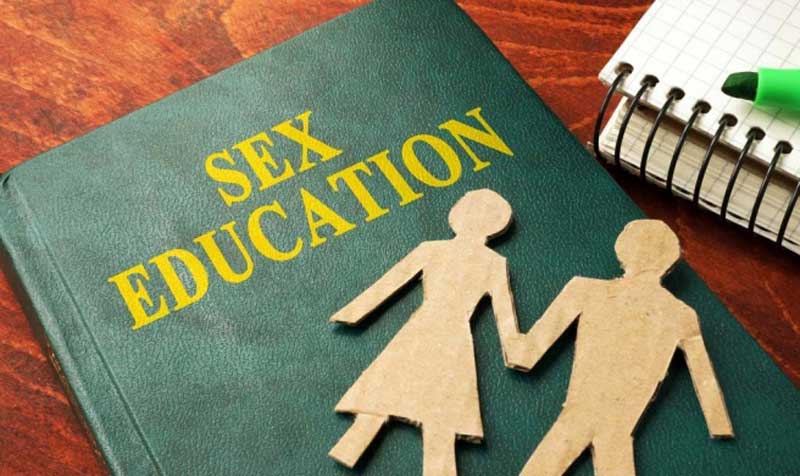Oppose 5395-CSE at March 12th Hearing
Posted by Washington State Parents Involved in Education
Urgent call to action! Please attend and oppose SB 5395 – Comprehensive Sex Education at the House Education Comm Hearing on Tuesday, March 12th at 8:00am.
You can learn more about the agenda behind Comprehensive Sex Ed in the following link: https://wapie.wordpress.com/sex-education-info/
This is a social agenda. The Protect Child Health Coalition has identified 15 elements found in CSE programs that they believe are harmful to children.
They are as follows:
1. SEXUALIZES CHILDREN
Normalizes child sex or desensitizes children to sexual things. May give examples of children having sex or imply many of their peers are sexually active. May glamorize sex, use graphic materials, teach explicit sexual vocabulary, or encourage discussion of sexual experiences, attractions, fantasies or desires.
2. TEACHES CHILDREN TO CONSENT TO SEX
May teach children how to negotiate sexual encounters or how to ask for or get “consent” from other children to engage in sexual acts with them. Note:“Consent” is often taught under the banner of sexual abuse prevention. While this may be appropriate for adults, children of minor age should never be encouraged to “consent” to sex.
3. NORMALIZES ANAL & ORAL SEX
Normalizes these high-risk sexual behaviors and may omit vital medical facts, such as the extremely high STI infection rates (i.e., HIV and HPV) and the oral and anal cancer rates of these high-risk sex acts.
4. PROMOTES HOMOSEXUAL / BISEXUAL BEHAVIOR
Normalizes or promotes acceptance or exploration of diverse sexual orientations, sometimes in violation of state education laws. May omit vital health information and/or may provide medically inaccurate information about homosexuality or homosexual sex.
5. PROMOTES SEXUAL PLEASURE
Teaches children they are entitled to or have a “right” to sexual pleasure or encourages children to seek out sexual pleasure. Fails to present data on the multiple negative potential outcomes for sexually active children.
6. PROMOTES SOLO AND/OR MUTUAL MASTURBATION
While masturbation can be part of normal child development, encourages masturbation at young ages, which may make children more vulnerable to pornography use, sexual addictions or sexual exploitation. May instruct children on how to masturbate. May also encourage children to engage in mutual masturbation.
7. PROMOTES CONDOM USE IN INAPPROPRIATE WAYS
May inappropriately eroticize condom use (e.g., emphasizing sexual pleasure or “fun” with condoms) or use sexually explicit methods (i.e., penis and vagina models, seductive role plays, etc.) to promote condom use to children. May provide medically inaccurate information on condom effectiveness and omit or deemphasize failure rates. May imply that condoms will provide complete protection against pregnancy or STIs.
8. PROMOTES EARLY SEXUAL AUTONOMY
Teaches children they can choose to have sex when they feel they are ready or when they find a trusted partner. Fails to provide data about the well-documented negative consequences of early sexual debut. Fails to encourage sexually active children to return to abstinence.
9. FAILS TO ESTABLISH ABSTINENCE AS THE EXPECTED STANDARD
Fails to establish abstinence (or a return to abstinence) as the expected standard for all school-age children. May mention abstinence only in passing. May teach children that all sexual activity—other than “unprotected” vaginal and oral sex—is acceptable, and even healthy. May present abstinence and “protected” sex as equally good options for children.
10. PROMOTES TRANSGENDER IDEOLOGY
Promotes affirmation of and/or exploration of diverse gender identities. May teach children they can change their gender or identify as multiple genders, or may present other unscientific and medically inaccurate theories. Fails to teach that most gender-confused children resolve their confusion by adulthood and that extreme gender confusion is a mental health disorder (gender dysphoria) that can be helped with mental health intervention.
11. PROMOTES CONTRACEPTION / ABORTION TO CHILDREN
Presents abortion as a safe or positive option while omitting data on the many potential negative physical and mental health consequences. May teach children they have a right to abortion and refer them to abortion providers. May encourage the use of contraceptives, while failing to present failure rates or side effects.
12. PROMOTES PEER-TO-PEER SEX ED OR SEXUAL RIGHTS ADVOCACY
May train children to teach other children about sex or sexual pleasure, through peer-to-peer initiatives. May recruit children as spokespeople to advocate for controversial sexual rights (including a right to CSE itself) or to promote abortion.
13. UNDERMINES TRADITIONAL VALUES AND BELIEFS
May encourage children to question their parents’ beliefs or their cultural or religious values regarding early sex, sexual orientation or gender identity.
14. UNDERMINES PARENTS OR PARENTAL RIGHTS
May instruct children they have rights to confidentiality and privacy from their parents. May teach children about accessing sexual commodities or services, including abortion, without parental consent. May instruct children not to tell their parents what they are being taught about sex in school.
15. REFERS CHILDREN TO HARMFUL RESOURCES
Refers children to harmful websites, materials or outside entities. May also specifically refer children to Planned Parenthood or their affiliates or partners for their lucrative services or commodities (i.e., sexual counseling, condoms, contraceptives, gender hormones, STI testing and treatment, abortions, etc.) Please Note: A conflict of interest exists whenever an entity that profits from sexualizing children is involved in creating or implementing sex education programs. (For more information on how Planned Parenthood sexualizes children for profit see www.WaronChildren.org and www.InvestigateIPPF.org) (https://www.comprehensivesexualityeducation.org/15-harmful-elements-of-cse/ , Accessed 3/5/2019)
